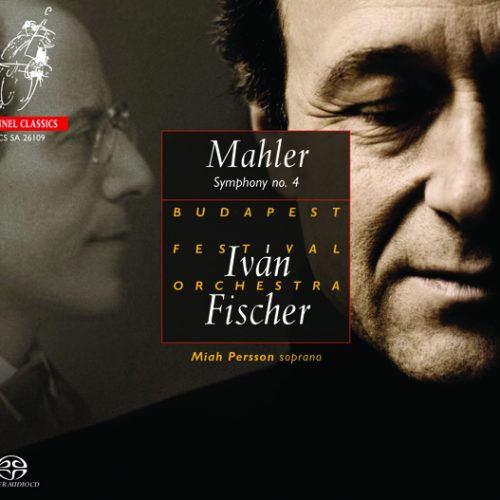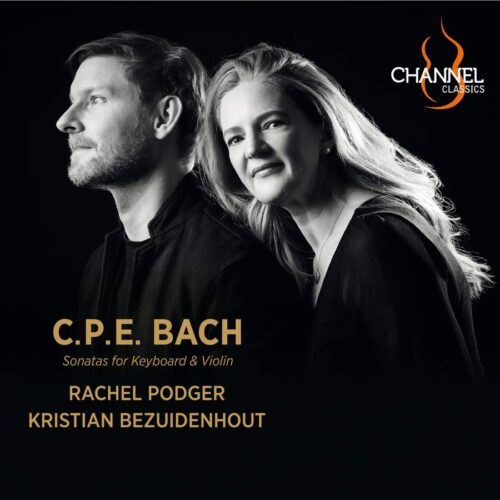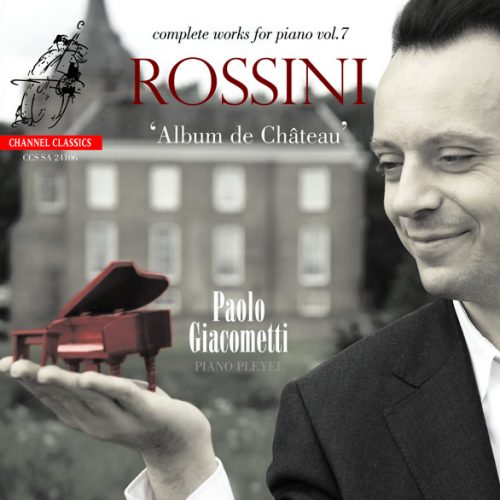
Influences and the Process of Arrangement:
From Historical Backgrounds to Composing of an Original Cadenza My source of inspiration was a joint one: the piano versions of the Violin Concertos of Bach and Beethoven, which were made by the composers themselves.
I started working on this project in early 2003 and completed it in 2008. The violin was always a favourite love, and I continue to hold violinists in high esteem, realising just how wonderful their literature is. Thus far, I have been tremendously lucky to have had many an opportunity to perform with some wonderful colleagues. And it is with a degree of pride that I present – after Bach and Beethoven – the third “great B” in the present arrangement.
Subjectivity plays a role of course, and I have always found this particular concerto, along with Beethoven’s 4th Piano Concerto, to be amongst the best instrumental concertos ever written. Naturally, I felt the challenge to arrange the Brahms early on. I was intrigued by the idea of rendering it in an idiomatic version for piano and orchestra. The ultimate aim was clear: I wanted to perform it myself!
The desire to arrange a violin concerto as a piano concerto just because one envisages donning the garb of the soloist, is not a good enough motive to take on this challenge. But I also do not feel there is any other romantic violin concerto that would survive the transformation.
At a musicological level, the correspondence between Brahms and his dedicatee Joseph Joachim played a major role for me. After numerous changes, much good advice, and actual corrections by Joachim it remains quite clear that Brahms had always composed as a pianist (at the piano) and therefore felt this music as a pianist, if also as a symphonic composer (originally, Brahms wrote the Violin Concerto in four movements, which was typical for a symphony). It is quite obvious that the Violin Concerto had its roots in both friendship and practicality: his aim was to write a concerto for Joachim, from which we can infer the term concerto took on a greater significance than the violin itself. But we are skating on thin ice here, what I mean to say is that it is quite justified to speculate about what would have happened if Joachim had been a cellist or a clarinettist, or even… a pianist!
Tracklist
Please note that the below previews are loaded as 44.1 kHz / 16 bit.Total time: 01:05:37
Additional information
| Label | |
|---|---|
| SKU | 29410 |
| Qualities | |
| Channels | 2ch Stereo, 5 Channel Surround Sound, 2ch Stereo & 5ch Surround |
| Artists | |
| Composers | |
| Genres | |
| Mastering Equipment | B+W 803 diamond |
| Conductors | |
| Original Recording Format | |
| Cables | van den Hul |
| Digital Converters | Meitner DSD AD/DA |
| Microphones | Bruel & Kjaer, Schoeps |
| Mastering Engineer | Jared Sacks |
| Mixing Board | Rens Heijnis custom made |
| Producer | Jared Sacks |
| Recording Engineer | Jared Sacks |
| Recording location | Sydney Australia, Eindhoven Holland |
| Recording Software | Pyramix |
| Speakers | Audio Lab Holland |
| Recording Type & Bit Rate | DSD64 |
| Awards | |
| Instruments | |
| Release Date | April 28, 2015 |
Press reviews
HVT
Je luistert met de viool in je geheugen en krijgt dan een totaal en tonaal andere klank, maar Dejan heeft het zó gedaan dat je verwarring meteen omslaat in bewondering en zelfs snel gewenning biedt, een groot compliment!
La Presse
l’exercice est pleinement convaincant et parfois même supérieur à l’original (…)
(…) Bref, l’impression est celle d’entendre un troisième concerto pur piano que Brahms aurait pu signer, surtout que les nuances et les dynamiques sont scrupuleusement respectées (…)
Das Orchester
Dejan Lazic fügt deren Lineatur so manche harmoniefüllende Begleitstimmen und gedoppelte Instrumentalstimmen aus dem Orchestersatz, akkordische Auffüllungen wie arpeggierende Auflösungen von Intervallsprüngen, nachschlagende Oktavparallelen wie mitlaufende Terz- und Sextparallelen hinzu. Er tut dies in unanfechtbarem, großem Respekt gegenüber Brahms’ originaler Textur und weiß sich mit Robert Spano und dem ihn empfindsam und mit klanglicher Wärme begleitenden Atlanta Symphony Orchestra einig in der Intention eines hoch differenziert gezeichneten Ausdrucksspektrums und einer schlüssigen Balance wie homogenen Einbindung in den Orchestersatz.(…) Man könnte diese klangliche Gestalt des D-Dur-Konzerts ohne Zweifel für einen echten Brahms halten (…)
Wäre da nicht der für einen Klaviersolopart doch recht schweifende Gedankenreichtum, der dem ursprünglichen Violinsolo nun einmal eigen ist und der in der unterschiedlich dicht gearbeiteten Adaption ein wenig von der einheitsstiftenden Verklammerung verliert. Der in der Symphony Hall in Atlanta live mitgeschnittenen Einspielung angefügt und im niederländischen Eindhoven nachproduziert worden sind die beiden Brahms’schen Rhapsodien b-Moll und g-Moll op. 79 und das Scherzo es-Moll op. 4. Hier zeigt sich ein weiteres Mal die ausgeprägte künstlerische Persönlichkeit, die Dejan Lazic auszeichnet, in den Rhapsodien eine gleichsam erzählerisch modellierende Lesart in sensibel und feingeschliffen ausgesteuerter Klang- und Formgebung, im Scherzo eine ungemein detailfreudige, artikulations- und akzentscharfe.
Klassieke Zaken
Flexibel, speelt, uitdagend, flitsende uitvoeringen. Een en al souplesse en luchtigheid. De concertjes voor een of twee traversos sprankelen van vitaliteit. De musici maken er een dartel feest van en vooral wanneer een solofagot zijn partijtje meeblaast, is vrolijkheid troef. Mooi opgenomen, fraaier kan de akoestiek van de Waalse Kerk in Amsterdan niet tot zijn recht komen.
Stereoplay
hier hat sich ein junger, hochbegabter Pianist mit ernsthaften kompositorischen Ambitionen und großem Geschick der schier unlösbaren Herausforderung gestellt und in einem fünf Jahre (!) währenden Arbeitsprozess das unbequeme Violinmonstrum in ein ähnlich symphonisch geprägtes Klavierkonzert umgeschrieben. (…)
Opus Klassiek
Het klinkend resultaat van Lazics inspanningen als componist/bewerker en als pianist mag er zijn. De orkestpartij laat hij onaangetast en aan de vioolpartij voegt hij vele noten toe. Sommige snelle passages worden in oktaven gespeeld, andere in tertsen. De harmonieën van de akkoorden die hij toevoegt zijn typisch Brahms. Begeleidende linkerhandfiguren zijn deels ontleend aan de orkestpartij. Lazic maakte bij het eerste deel een virtuoze en idiomatische cadens.
De bewerker is zorgvuldig met de partituur omgegaan (hij deed vijf jaar over het project) en heeft zich goed ingeleefd in de sfeer van Brahms’ muziek met als doel tot een volledig Brahmsiaans resultaat te komen.
Lazic speelt als solist met verve zijn nieuwe partituur: enthousiast en virtuoos. De nadruk ligt op stevig vitaal pianospel, eerder heroïsch dan lyrisch – een aanpak die het stuk in deze gedaante best kan hebben. Dirigent Robert Spano begeleidt met het Atlanta Symphony Orchestra de solist voortreffelijk.
Ten slotte de vraag: zaten we op deze bewerking te wachten? Misschien niet, misschien wel – maar de kennismaking met deze creatieve en zo goed gelukte realisatie van de droom van een enthousiaste jonge pianist-componist maakt dit soort vragen onbelangrijk.
Telegraaf
Het lijkt gekkenwerk. Maar deed Beethoven niet hetzelfde met zijn eigen vioolconcert? Het aardige is dat de bewerking van Lazic volbloed pianistisch klinkt. De liveopname van dit Derde pianoconcert heeft de Kroaat gemaakt met het Atlanta Symphony Orchestra, gedirigeerd door Robert Spano. Dat Lazic een nog betere pianist is dan deze registratie laat horen, bewijzen de drie toegevoegde solowerken van Brahms – twee Rapsodieën en een Scherzo (…)
Rondo
Nun haben die zwei Klavierkonzerte, ganz unvermittelt, eine Schwester erhalten. Sie kleidet sich in D-Dur und ist eigentlich und ursprünglich ein Werk für Violine und Orchester. Kein Geringeres als das Opus 77 desselben Komponisten, ein faszinierendes, schillerndes Werk. Brahms selbst aber kann nun nicht mehr widersprechen. Und so hat Dejan Lazi? sich anheischig gemacht, eben dieses Opus zu bearbeiten. Ein kühnes Unterfangen, so ungewöhnlich wie gewöhnungsbedürftig. (…)
(…) in einigen Passagen singt das Klavier tatsächlich so schön wie eine Violine (und ebenso ausgreifend und inniglich wie das Atlanta Symphony Orchestra unter Robert Spano es ohnehin die ganze Zeit über tut).
Frankfurter Neue Presse
Lazic überzeugt wieder einmal mit farbenreichem, höchts kultiviertem Spiel. Auch in den beiden Rhapsodien, op. 79 und dem Es-Moll-Scherzo.
Pizzicato
Wie echter Brahms!
(…) Dejan Lazic hat den Violinpart aber nicht nur ‘brahmisch’ sondern auch pianistisch wunderbar umgesetzt und so Mehrwert produziert. Nirgends hat man die Eindruck, die Musik klinge unnatürlich, und man hört sich die drei Sätse des Werks mit Interesse an. (…)
(…) Excellent sind auch die Solostücke, die Lazic spielt, so dass man die Platte nur empfehlen kan.
The Absolute Sound
Dejan Lazic’s 2008 rendering of the work as a piano concerto (here in its first recording) is amazingly effective. It leaves the orchestration untouched and transforms the solo violin part into idiomatic Brahmsian piano figurations with appropriately rich chordal sonorities, sparkling arpeggios, and a fully elaborated first-movement cadenza. Lazic plays with flair, eloquence, and, in the lovely central adagio songful poetry.Recorded ‘live in concert’ the hybrid SACD conveys full throated weight and a judicious balance between soloist and orchestra, with the multichannel encoding offering extra ambience.
International Record Review
Note for note Dejan Lazic has retained the original orchestral parts, so its purely the solo violin line which has been transferred into a piano part.
This transcription is not a gimmick. Virtually 100 per cent successful and convincing. Well worth hearing, without preconceptions.
Remarkably successful.
Fanfare
This is one outstanding recording, and Lazic has done everyone a service by coming up with this very serviceable and idiomatic arrangement (…)
(…) pianists now have access to a work that is transformable and transferable to a new idiom that is able to convey its emotive and pristine core to an audience… And fortunately he includes the two Rhapsodies as well, and these readings are absolutely top-notch in every way, in tempo voicing, and overall arch. In fact, I now rank these with my three previous favourites, by Lupu, Rubinstein, and Klien.”
Audiophile Audition
The whole work sounds like it was a piano concerto to begin with. (…)
(…) Lazic has done a masterful job of transcription as well as of performance (…)
A unique and recommended recording!”
MusicWeb
The result is persuasive for its idiomatic writing for piano, which has a sense of authenticity within the context of the Violin Concerto itself, and also in the style of piano writing Brahms used for his piano concertos. (…)
(…) At bottom, though, it is important to listen for the musicianship that Lazic brings to the performance. The point of the arrangement is the way the music of Brahms’s Violin Concerto moves Lazic to find a way to perform the work. As a pianist, his mode of expression is to take the work to his instrument. This is by no means a new or controversial practice in music, but belongs to a tradition that can be found in a number of pieces by Bach, Liszt, Mahler, Britten and other figures. This is testimony to the deep impression some works make in prompting musicians to respond in a similarly creative manner. (…)
Only logged in customers who have purchased this product may leave a review.






Reviews
There are no reviews yet.